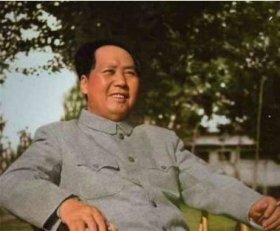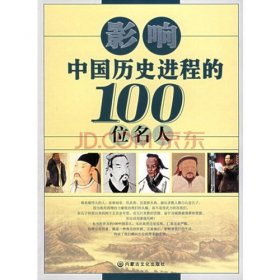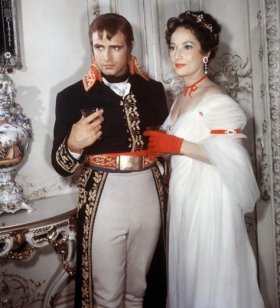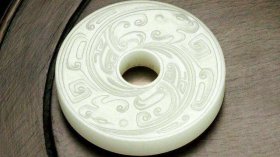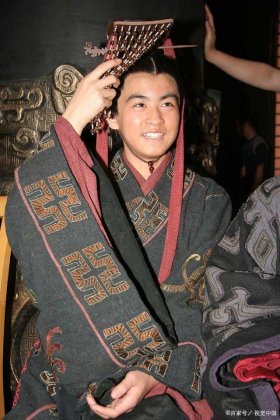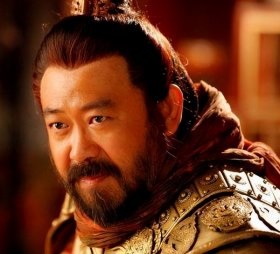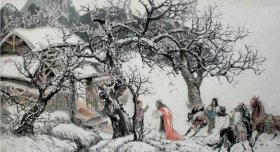杨宪益-《红楼梦》英译本中的成语典故
-
杨宪益,红楼梦,文化,读书

- 中国历史故事-小虎历史故事网
- 2023-09-04 01:42
- 小虎历史故事网
杨宪益-《红楼梦》英译本中的成语典故 ,对于想了解历史故事的朋友们来说,杨宪益-《红楼梦》英译本中的成语典故是一个非常想了解的问题,下面小编就带领大家看看这个问题。
原文标题:《红楼梦》英译本中的成语典故
成语典故属于文化色彩比较浓厚的一类例子,中国文学作品中的成语典故,对本族语读者来说,大都具有丰富的内涵和鲜明的形象,或指人,或指事,大都简练、含蓄却又能引起丰富的联想。这显然是与读者的整体文化素质紧密相关的,而且也极难在译入语中找到对等的表达。“英汉民族在历史演变、生态环境、宗教信仰、风俗习惯等方面有着较大的差别,各自的语言都带有鲜明的民族色彩,典故可以说是民族文化的缩影,因此民族色彩在典故喻体的采用和设喻形式上都体现得特别明显。”[1]研究《红楼梦》英译本中成语典故的表现无疑能加深我们对两种语言这些特点的认识。
我们首先来看只有人名的典故。这些典故虽然只提到某些特定的人名,但对中国读者来说意思再清楚不过了。戴乃迭说:“有时可能只提一个名字,比如‘红娘’。对中国人来说,只要一提这二字,人们马上会联想起一整套故事情节及其中人物之间的关系等等。但是,我们怎样把这些翻成英语呢?当然,我们可以加脚注或尽量多作些解释;然而,英译文总是比原文累赘得多,也不及原文有力。”[2]比较常用的方法有三种:
第一种是省略不译原文的人名或用其他名词替代。比如:
例1
第一回,
至若才子佳人等书,则又开口‘文君’满篇‘子建’,千部一腔,千人一面,且终不能不涉淫滥。(64版)
And the “boudoir romances”, those dreary stereotypes with their volume after volume all pitched on the same note and their different characters undistinguishable except by name (all those ideally beautiful young ladies and ideally eligible young bachelors)—even they seem unable to avoid descending sooner or later into indecency. H 1, 50[3]
至若佳人才子等书,则又千部共出一套,且其中终不能不涉于淫滥,以致满纸潘安子建、西子文君(82版)
As for books of the beauty-and-talented-scholar type, a thousand are written to a single pattern and none escapes bordering on indecency. They are filled with allusions to handsome, talented young men and beautiful, refined girls in history; Y 1, 4
这几个人名,就算可以加注也需要很大的篇幅才能说清楚。因此两位译者都把他们略去了。这样的省略没有背离原文的意思,只会使译
中国历史故事卡通
文更简洁。例2
第七回,
他是哪吒,我也要见一见!
Even if he’s a monster, I insist on seeing him. Y 1, 111
I don’t care if he’s a three-faced wonder with eight arms, I still want to see him. H 1, 177
“哪吒”如果直译,一定又需要加注,而且要从《封神演义》说起。所以杨宪益译成了“怪物”,霍克思译成了“三头八臂”。
例3
第七十二回,
你们看着你家什么石崇邓通。把我王家的地缝子扫一扫,就够你们过一辈子呢。
You’re not exactly millionaires, are you? We Wangs could probably keep you going for the rest of your lives just with the sweepings from our floor! H 3, 425
You think you’re as rich as a mint-master. The sweepings from the cracks in our Wang family’s floor are enough to last you a lifetime. Y 2, 547
石崇邓通都是有名的富豪,邓通甚至得到皇帝的允许开采铜山造钱。杨宪益的译法传达了一点原文的信息,霍克思则干脆意译。
第二种是在文中说明或加页尾注,比如:
例1
第五回,
应惭西子,实愧王嫱。
The beauties of days gone by by her beauty are all abashed. H 1, 129
She would put Hsi Shih to shame and make Wang Chiang blush. [4]Y 1, 71
英语读者却未必知道西子、王嫱就是西施和昭君,所以行文中有必要加注,杨宪益就是这样处理的;霍克思的方法是干脆省略不译。此处省略似乎是更好的办法,因为对理解小说并无多大障碍,原文无非是说警幻仙子很美罢了。
例2
第五回,
案上设着武则天当日镜室中设的宝镜,一边摆着飞燕立着舞过的金盘,盘内盛着安禄山掷过伤了太真乳的木瓜。上面设着寿昌公主于含章殿下卧的榻,悬的是同昌公主制的联珠帐。
On a table stood an antique mirror that had once graced the tiring-room of the lascivious empress Wu Ze-tian. Beside it stood the golden platter on which Flying Swallow once danced for her emperor’s delight. And on the platter was that very quince which the villainous An Lu-shan threw at beautiful Yang Gui-fei, bruising her plump white breast. At the far end of the room stood the priceless bed on which Princess Shou-yang[5] was sleeping out of doors under the eaves of the Han-zhang Palace when the plum-flower lighted on her forehead and set a new fashion for coloured patches. Over it hung a canopy commissioned by Princess Tong-chang entirely fashioned out of ropes of pearls. H 1, 127
这一大段关于秦氏房中陈设的描写,原文里有很多暗示柔情性爱的典故。甲戌侧批:“设譬调侃耳,若真以为然,则又被作者瞒过。”“一路设譬之文,迥非《石头记》大笔所屑,别有他属,余所不知。”杨宪益的做法是直译人名,然后加注,霍克思的译法则是都在译文里明点出来,周珏良认为“从字面上说是多了,但从表达实质内容上说却正好,比依字直译,每句都加注使读者舒服得多。我认为译文学作品,特别是象中英这
儿童读的中国历史故事
两种文字在语言和文化背景上都有很大距离的情况下,要使读者能领略到原文的味道,应用这种译法常常是不可避免的。”[6]例3
第五十二回
又不是老君的仙丹,那有这样灵药!
This stuff isn’t the Elixir of Life. You can’t expect it to cure you in a twinkling. H 2, 547
He’s no LaoTsu[7] with a magic elixir to cure you overnight. Y 2, 187
其实老君与否都不是问题,麝月不过是半开玩笑,只说仙丹意思也就完整了。杨宪益添了脚注说明这种说法来自《西游记》,显得更麻烦一点。
例4
第六十八回,
我便是个韩信张良,也把智谋吓回去了。
Even if I’d been a forensic genius, which I’m not, hearing them say that would have been enough to shut me up. H 3, 350
So you see, sister, even if I’d been as wise as Han Hsin or Chang Liang[8], such talk would have frightened me out of my wits. Y 2, 486
这里一旦加注又得用很大篇幅说明,因此霍克思用意译。当然加注能使读者更多地了解中国的历史、文学等背景知识,但同时也加重了读者的阅读负担。杨宪益在能用脚注的地方大都使用了,似乎更适合研究型的读者而并非一般性的读者。
第三种办法是直译名字,却不加说明。这种做法似乎值得商榷,其实更可以加注或者用其他方式来解释。比如:
例1
第四十回,
贾母道:“这鬼抱住钟馗腿。”
The devil shouts, “Zhong Kui, let me go!” H 2, 300
By his leg the ghost-catcher he’s caught. Y 1, 597
霍克思只译出钟馗的名字未加说明或注解,恐怕不是好办法;杨宪益只说“抓鬼的”,英语读者便不会有理解上的问题。
例2
第五十七回
黛玉笑道:“你要是个男人,出去打一个报不平儿。你又充什么荆轲聂政,真真好笑。”
‘If you were a man,’ said Dai-yu, laughing, ‘you could go around like a knight-errant putting the world to rights; but a Jing Ke in skirts is just plain ridiculous!’ H 3, 115
‘If you were a man, you could go out and right wrongs.’ teased Dai-yu. ‘But you’re not a Ching Ko or a Nieh Cheng[9]. Don’t be ridiculous.’ Y 2, 288
霍克思仍是只译姓名不加注解,这很容易令读者迷惑。杨宪益则仍用脚注,虽然读者可能觉得不方便,但意思表达完整了。
例3
第九回,
原来薛蟠自来王夫人处住后,便知有一家学,学中广有青年子弟,不免偶动了龙阳之兴,因此也假来上学读书,
When Xue Pan learned, some time after moving into his aunt’s place in the capital, that the establishment included a clan school plentifully stocked with young males of a certain age, his old enthusiasm for ‘Lord Long-yang’s vice’ was reawakened, and he had hastened to register himself as a pupil. H 1, 207
Now Hsueh Pan had not been long in the Jung Mansion before he learned of this school, and the thought of all the boys there appealed to his baser instincts. Y 1, 136
霍克思虽然直译,却用引号提醒读者注意此处的特殊含义,杨宪益的译文干脆意译,省去解释说明的麻烦。
其次是地名,因为有些地名也是中国特有的,直译势必造成英语读者的困惑。比如英语里的成语carry the coals to Newcastle,Newcastle 是英国产媒中心,整句成语意近“多此一举”。这句话若要译成汉语,只能意译,直译的话势必需要加注说明。带中国地名的汉语成语译成英文是同样的道理。
例1
第四十八回,
宝钗笑道:“我说你‘得陇望蜀’呢。
You are like the famous general: “one conquest breeds appetite for another”. H 2, 453
“The more you get, the more you want!” chuckled Pao-chai. Y 2, 113
这个成语的地域色彩特别明显,两位译者都改为意译,这样就避开了解释说明的麻烦。
例2
第五十回,
寻春问腊到蓬莱
In quest of spring I sped to Elysium— H 2, 500
He goes to the Fairy Isles in search of spring, asking a boon. Y 2, 149
霍克思用Elysium来翻译“蓬莱”,总觉得有些异样。Elysium指的是古希腊神话传说中好人死后的住所,避开了中国的地域色彩,却又带上了西方的地域色彩。因此杨宪益的译法似乎更恰当。
再次还有一些典故是出自经书或史书的话,翻译时需要解释说明原文的出处。
例1
第六十二回,
(湘云)便知宝琴覆的是“吾不如老圃”的“圃”字。
She guessed at once that Bao-qin must be thinking of the passage in the thirteenth book of the Analects where Confucius tells a person who wanted to study horticulture that he would ‘much better go to some old fellow who kept a market garden and learn about it from him’. H 3, 197
Catching sight of the name Red Fragrance Farm over the door, she realized that Pao-chin had in mind the line “I am not as good as the old gardener.” [10]Y 2, 359
霍克思仍是倾向于在文中添加解释的部分,而杨宪益则习惯于加脚注。这两种做法都各有利弊。霍克思解释过他的做法:“对西方读者来说,由于缺乏曹雪芹认定他的同时代人能够理解的文学背景,常常会感到困惑或不可理解。为解决这个问题,有时我会稍稍扩展原文,我认为这样很有必要。虽然我也可以用脚注来解释,而且这些脚注也很恰当,但在我看来,阅读带有大量注释的小说无异于戴着锁链打网球。”[11]脚注给阅读带来的不便是显而易见的,不过读者如果不耐烦细读,跳过这些脚注似乎也并不太影响阅读的进程。
例2
第七十三回,
‘虎狼屯于阶陛尚谈因果’
Ying-chun makes me think of that monk who went on discussing theological matters while wolves and tigers prowled outside in his courtyard, H 3, 453
This is really a case of ‘descanting upon religion while tigers and wolves gather at one’s gate.’ Y 2, 570
82版1043页注:“此语原意讽喻封建帝王佞信佛道以致祸国殃民。如南朝梁武帝萧衍,当叛将侯景的军队已打到京师围困台城,他还一心皈依佛教奢谈因果(见《南史·梁简文帝诸子建平王传》)。这里指的是对与已生死攸关的事,采取不闻不问的态度。”宫殿的台阶方可称“陛”,因此用“陛下”指代皇帝。这里的“虎狼”指的是“虎狼之师”,当然不是真的老虎和狼,但两家译文都按字面意思翻译。
最后有些成语已经不带有原来出处的痕迹,变成常用词了。霍克思作为母语非汉语的读者,更注意这些成语本来的意思,因此在翻译过程中常常翻出它们在原文中的意思来。而杨宪益经常是意译或者加脚注。
例1
第六十二回,
宝琴笑道:“请君入瓮。”
‘You know what Lai Jun-chen said when he showed Zhou Xing the fiery furnace that Zhou Xing himself had designed,’ said Bao-qin: ‘ “Please step inside!” I think that’s what I should say to you now. Why don’t you do the forfeit that you designed for Bao-yu?’ H 3, 200
Pao-chin quipped, “Please get into the jar, sir!”[12] Y 2, 361
霍克思把含有这个成语的故事都写进了译文里,杨宪益仍是加注。
例2
第六十四回,
说得天花乱坠,不由得尤老娘不肯。
The Liang dynasty preacher on whom the heavens rained down flowers could not have spoken with greater eloquence. Mrs You could hardly fail to agree…H 3, 271
传说梁武帝时云光法师讲经,感动上天,天上的花纷纷坠落。后世用以形容夸大的,没有根据的动听言辞。霍克思添了这个故事,而杨宪益则只用意译:
He painted such a glowing picture that naturally old Mrs. Yu agreed. Y 2, 418
例3
第七十五回,
于是天天宰猪割羊,屠鹅戮鸭,好似临潼斗宝一般,都要卖弄自己的好厨役好烹炮。
It became a point of honour to make these dinners as lavish as possible, so that the daily junketings as Ning-guo House came more and more to resemble the Diet of Lintong in the well-known play of that name, except that whereas Duke Mu’s princely guests competed in the bravery of their commanders and the magnificence of their regalia, it was in the skill of their chefs and in masterpieces of culinary art that the members of the Ning-guo archery club strove to outdo each other. H 3, 492
霍克思详尽地说明临潼斗宝究竟是怎么回事,而这个典故在杨宪益的译文里干脆消失了:
And so day after day they had pigs, sheep and poultry killed and vied to show off their wealth, the skill of their chefs and the sumptuousness of their feasts. Y 2, 601-2
包惠南曾说典故的翻译要“既要尽可能再现原文的民族特色,又要易于为译语读者所理解和接受” [13],总结两位译者的经验,比较好的办法主要是直译加注,或者在文中直接解释,甚至意译也能传达原文的意思。而直译不加解释或脚注的方法显然不够恰当,因为原文的信息显然没有传递到位。
戴乃迭曾应《文汇》杂志的邀请谈她对《红楼梦》的看法,她说:“西方读者遇到的另一个障碍,是这部小说一开始就写了许多西方人完全不熟悉的神话和传说
新中国历史故事作文
。作者将佛教和道教里的神和仙同凡人混在一起,以高度现实主义的手法加以描绘。这就把我们闹糊涂了,因为我们自幼受希腊罗马神话传说和圣经的熏陶——完全是另一种文化传统。……《红楼梦》里引用了大量文学和经书典故,其中有一些连今天的中国青年都不清楚,更何况外国读者。”[14]这些成语典故大多是与文化背景、历史积淀有关的,因此在翻译中不可避免地要逊色不少。戴乃迭承认她感到最困难的就是把中国的四字成语翻译成英语:“每一个四字成语都有非常丰富的内在含意,可能其中还包含着一个典故。但是,一旦译成英语或用英语解释时,可能就需要一个或两个句子来表一篇中国历史故事
达。即使如此,仍旧不能表达出原文所有的气魄和分量。”[15]本文的分析正可以说明这一点。[1] 包惠南,《文化语境与语言翻译》,中国对外翻译出版公司,2001年,第249页。
[2] “土耳其挂毯的反面”,见王佐良,《翻译:思考与试笔》,外语教学与研究出版社,1989年,第83页。
[3] 本文所引用的杨宪益、霍克思两种译文,H1, 50代表霍克思译本,第1卷第50页;Y 1, 4代表杨宪益译本,第1卷第4页。下同。版本则为Hawkes, David, The Story of the Stone, also known as The Dream of the Red Chamber, Vols.1-3, London: Penguin Books1973-1980,以及Yang Xianyi and Gladys Yang, A Dream of Red Mansions, 3Vols. , Beijing: Foreign Languages Press1978-1980.
[4] A famous beauty in the Han Dynasty. Y 1, 71.
[5] 寿昌公主应是寿阳公主之误。霍克思已经改正过来了。
[6] 周珏良,《周珏良文集》,外语教学与研究出版社,1994年,第227页。
[7] According to Pilgrimage to the West, a 16th-century novel by Wu Cheng-en, the founder of Taoism Lao Tzu became an immortal after his death and distilled elixirs in the Celestial Region. Y 2, 187.
[8] See Note 3 on p.159 and Note 2 on p.160, Y 2, 486.
[9] Two ancient assassins who attempted to avenge their masters. Y 2, 288.
[10] From the Analects. Y 2, 359.
[11] Preface to Vol. 2, The Story of the Stone, pp. 17-18, 译文见本书附录“霍克思译本序跋”。
[12] A quotation from Szuma Kuang’s Mirror of Governance, meaning that injury is repaid in kind. Y 2, 361.
[13] 包惠南,《文化语境与语言翻译》,中国对外翻译出版公司,2001年,第250页。
[14] 戴乃迭,“一个西方人对《红楼梦》的看法”,《文汇(增刊)》1980年第1期,第60页。
[15] “土耳其挂毯的反面”,见王佐良,《翻译:思考与试笔》,外语教学与研究出版社,1989年,第83页。
(本文由作者提供,中华文史网首发,转载时请注明出处。)
原文出处:http://his.newdu.com/a/201711/04/510438.html
以上是关于杨宪益-《红楼梦》英译本中的成语典故的介绍,希望对想了解历史故事的朋友们有所帮助。
本文标题:杨宪益-《红楼梦》英译本中的成语典故;本文链接:http://gazx.sd.cn/zggs/29607.html。
上一篇:孟子-论孟子的民本主义
猜你喜欢
- 八大山人-朱耷为什么叫八大山人的名字由来 2023-08-14
- 元宵节的习俗-元宵节是为了纪念哪位历史人物?为什么要纪念他? 2023-08-09
- 元宵节的习俗-元宵节晚上做什么?元宵节有哪些习俗? 2023-08-09
- 七夕节-古代的七夕节相互都送什么礼物? 2023-08-09
- 武修文-武修文和武敦儒的结局盘点 2023-08-09
- 觉远大师-觉远大师是扫地僧吗?扫地僧到底是谁 2023-08-09
- 花木兰-花木兰原来不是人?唐代救世天尊下界化作女身! 2023-10-22
- 如来佛祖-解密:西游中如来佛祖炼制的最强法宝是什么? 2023-10-22
- 无量劫-“佛”为什么还要遭遇无量劫 连阿弥陀佛都不幸免? 2023-10-22
- 吴承恩-吴承恩笔下观音如此迷糊 只是因为情节需要吗? 2023-10-22
